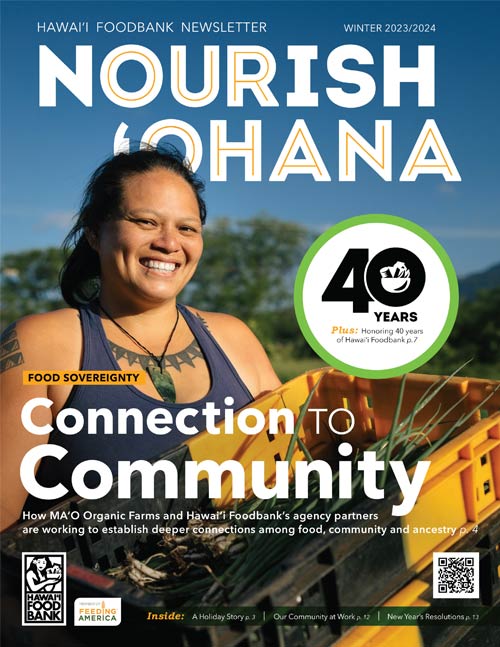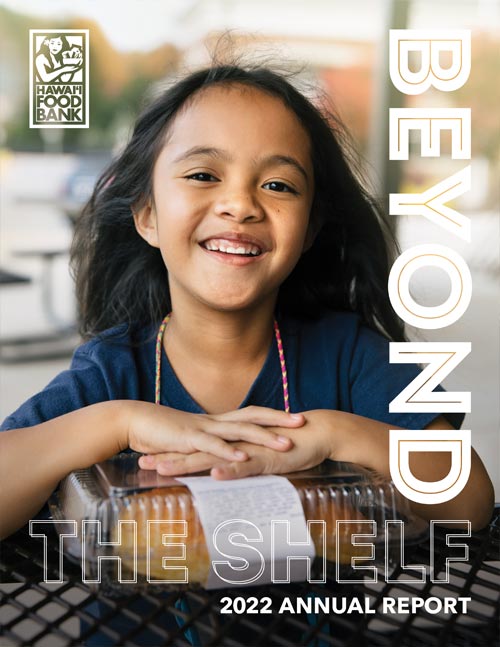Farm to Foodbank: Huang’s Green Leaf Products
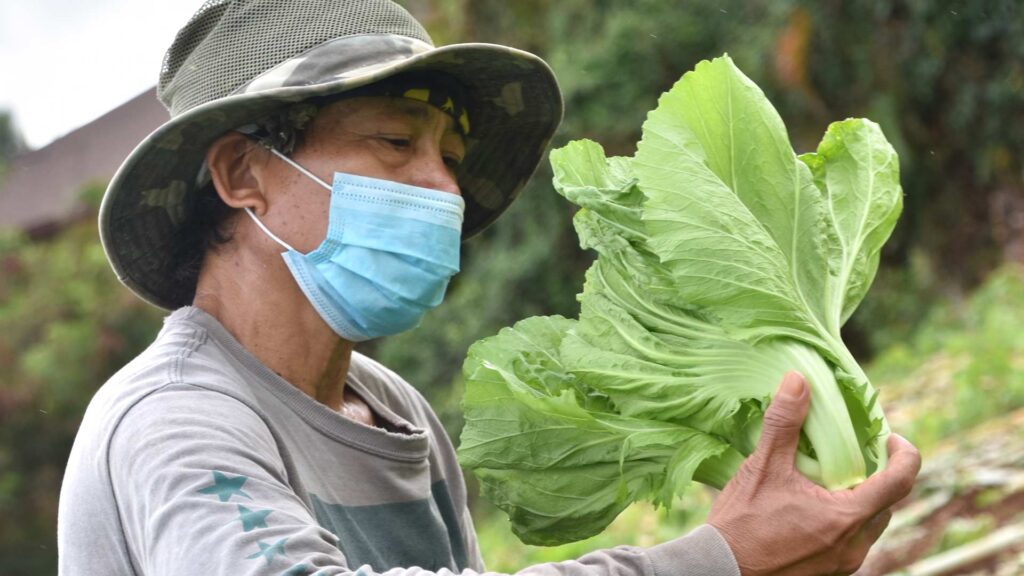
Ron Mizutani
A Wai‘anae family farm provides sustenance over subsistence amid COVID-19 pandemic.
Hawaii farmers often talk about the fragility of slim margins. It is a constant uphill battle that many cannot survive. A farmer is the only person in our economy who buys everything at retail, sells everything at wholesale and pays the freight both ways. No one farms to make millions.
The agriculture industry had already forecasted tight profit margins in 2020, but when COVID-19 arrived on Hawaii’s shores in early March, meeting those projected numbers was no longer the immediate priority. Health and safety took center stage.
“First thing we did was plan guidelines and protocols to prevent anyone in our family business to be exposed to COVID-19. We didn’t want anyone get sick,” said Tony Wong Cam of Huang’s Green Leaf Products. “As business slowed down, we asked ourselves, ‘How are we going to deal with it? Do we still keep planting?’ It all happened so sudden, but we knew people still needed food.”
The Huang family chose not to plow their products back into the soil and kept working — hoping something would surface.
That something happened in mid-April when Hawaii Foodbank announced a new, strategic partnership with Hawaii Farm Bureau. In response to the COVID-19 health crisis and in line with its ongoing efforts to ensure the longterm sustainability of Hawaii’s food assistance system, Hawaii Foodbank committed to purchasing $200,000 in local agricultural products for its food distribution programs. Hawaii Foodbank recognized the importance of keeping Hawaii’s farmers farming, and the partnership provided a new way to get high-quality, nutritious food to some of Hawaii’s most vulnerable communities.
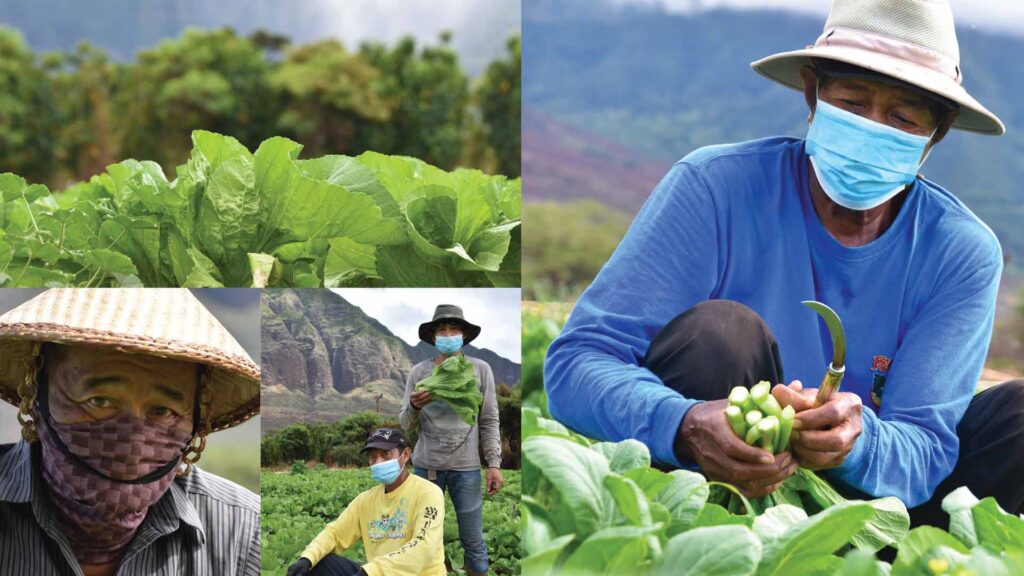
“We are grateful to Hawaii Foodbank in partnering with us on this latest initiative to assist the community during these challenging economic times,” said Hawaii Farm Bureau Executive Director Brian Miyamoto. “These food purchases by Hawaii Foodbank will provide much needed income to farmers and ranchers and allow them to continue their operations. In turn, this partnership ensures these locally-grown food products are distributed to families who are really in need.”
Huang’s Green Leaf Products was one of those farms that was prepared and immediately ready to supply food. Since mid-April, Hawaii Foodbank has purchased more than $19,000 worth of fresh produce from the farm, including 21,320 pounds of pak choy and kai choy.
“Thanks to Hawaii Foodbank, we kept planting, and we were able to keep our 35 employees working,” said company matriarch Fanny Gan. “With Hawaii Foodbank’s help, none of our employees filed for unemployment. We are so happy, and we hope this program can continue to help farmers. The sales went down so much, but the percentages are getting better. For me, I really rely on the food bank, and I believe other farmers are, too.”
When they began, my parents saw a need to provide for me and my siblings. Now, they are providing food and sustenance for many people.
— Tony Wong Cam, Huang's Green Leaf Products
Fanny Gan smiles when she looks back at the farm’s roots — back when she started farming in 1997 with her husband Xian Xing Huang. She admits she knew very little about living off the land, but she wanted to support her husband’s dream.
“I just needed something to do with the skills my husband had. He’s the one who chose farming,” she says of their humble start on a two-acre lot in Wai‘anae. “After working all those years, I’ve learned little by little, and now I enjoy it because I know we’re providing food for a lot of people.”
Over the next 20 years, the family expanded operations and diversified their crops to include choy sum, green onions, Chinese parsley, mustard cabbage, cilantro and eventually fresh herbs. Today, they have more than 40 acres of farmland in the Wai‘anae Valley.
Tony recently returned home to help his parents keep their dream alive and brought with him fresh ideas and new energy.
But one thing did not change — his family’s commitment to their Wai‘anae community.
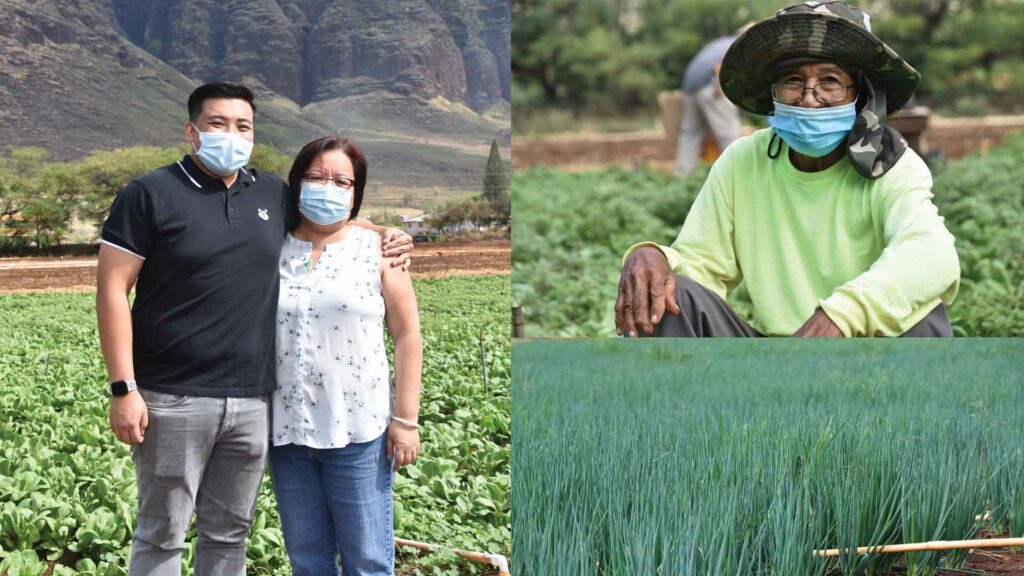
“When they began, my parents saw a need to provide for me and my siblings. Now, they are providing food and sustenance for many people,” says Tony. “The biggest challenge in agriculture is cost of land and labor. And when you add the cost of living, margins get even slimmer, so you have to be more creative how you do business.”
While Tony believes creativity and staying relevant are important, he also knows believing in what you do is what truly brings success. “When COVID-19 hit, our operation of planting remained normal because we believed. We never stopped believing. And when Hawaii Foodbank wanted product, we were ready,” says Tony. “The program really supports local farmers, and the extra demand for locally desired vegetables is something we really appreciate. It has not been easy, but hearing how people are receiving our products makes my mom and dad very happy. They feel like they are giving back.”
Update: In the first six months of partnering with Hawaii Farm Bureau, Hawaii Foodbank has more than tripled its initial commitment — investing more than $750,000 in locally grown produce while supporting 19 Hawaii farms in the process.




